Reflecting on past processes is an indispensable step toward continuous improvement in the world of data strategy. Datentreiber’s 3-Boxes Canvas offers teams a powerful tool to retrospectively assess their performance and gain hidden insights for future strategies. The significance of this tool is underscored by its abilities:
- To identify opportunities and challenges: It provides insights into areas with potential for improvement and opportunities for future projects.
- To Refining the task definition: It assists teams in more clearly defining problems and developing company-specific solutions.
- To increase effectiveness and efficiency: By understanding the current state, new processes can be designed more purposefully and efficiently.
- To avoid repetitive errors and waste of resources: Employees learn from past mistakes, thereby reducing future wastage of time and resources.
Furthermore, the 3-Boxes Canvas is an ideal starting point and conclusion for any workshop with additional Datentreiber Canvases. In this article, we will show you how to effectively use the Canvas for your team retrospectives and thus also master a perfect entry into the workshop.
3-Boxes Canvas: A Flexible Tool for Team Retrospectives
The 3-Boxes Canvas is a versatile and generic tool that divides into three central areas: “What went well?”, “What went poorly?” and “What have we learned?”. This labeling is flexible and can be applied in various contexts to support teams in viewing and holistically analyzing their experiences from different perspectives. In article 3 of our series, we will see how the Canvas can be used in a new context with three new fields.
Practical Application of the 3-Boxes Canvas
Let’s consider the data team of Sad HIPPO Company, which has been working on several projects over the past few months. The team now faces the challenge of retrospectively evaluating its own performance and identifying areas for improvement as part of a new, company-wide data strategy. For a detailed analysis, it is essential to bring together all users – the entire team – to thoroughly examine the processes and structures. An On-Site workshop is held for this purpose.
In a large room hangs a DIN-A0-sized 3-Boxes Canvas on the wall. Alternatively, all canvases can also be used on the Miro Board, which is particularly useful for remote teams.
After an introductory welcome and an initial introduction to the situation, the team retrospective begins. The workshop leader now goes through the respective fields one by one. No more than about 5 minutes should be spent on each field. Each team member contributes their thoughts and observations to the current field, and the workshop leader notes these on colored sticky notes.
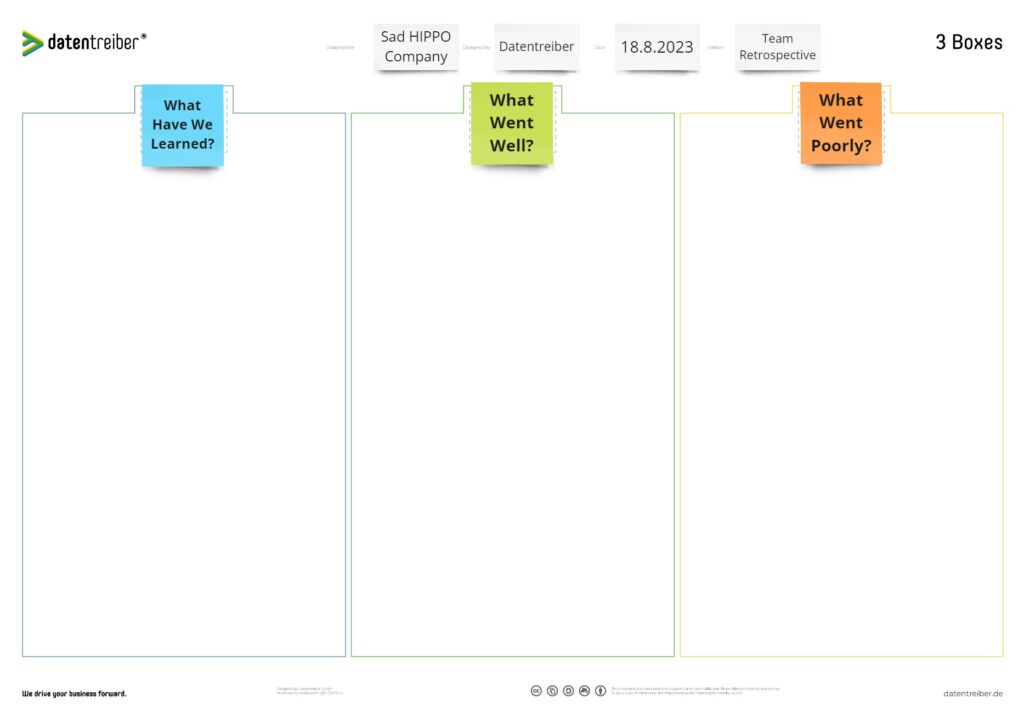
Conducting the Retrospective:
The interactive session begins with “What have we learned?“. The workshop leader encourages team members to share their insights and experiences. As they speak, he moves around the room, noting contributions on colored sticky notes and attaching them to the Canvas.
Starting with “What have we learned” can encourage participants to engage in the retrospective, to jointly reflect on the lessons they have individually or collaboratively learned from past experiences. This step serves as an icebreaker and helps attendees focus on past experiences without immediately judging them.
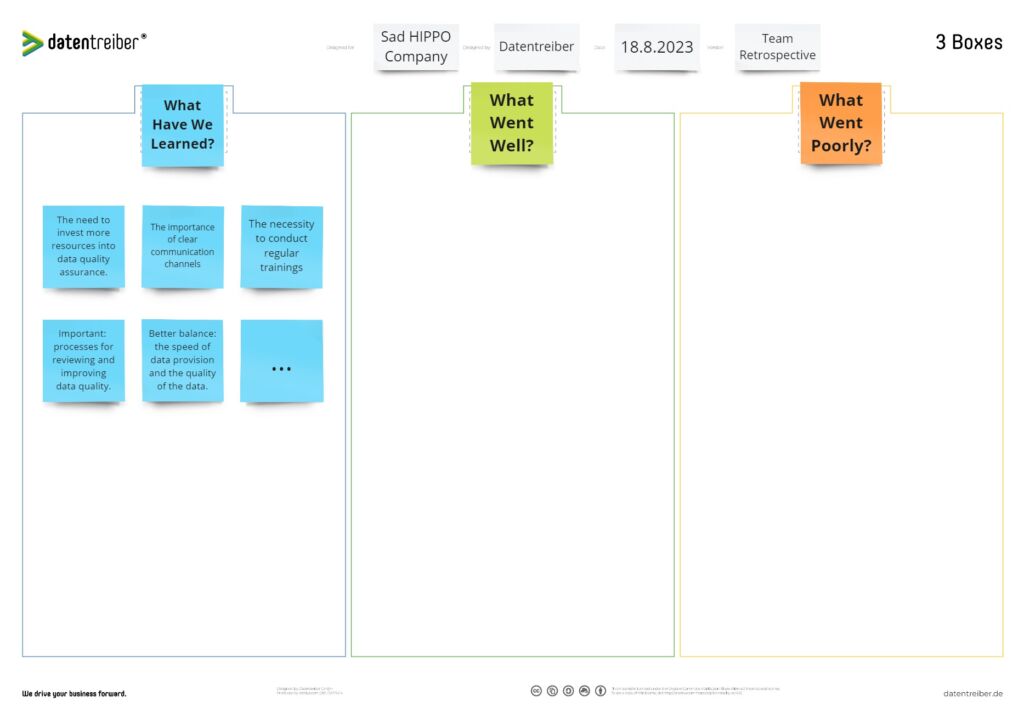
After a short break for the team to interact, the transition to “What went well?” follows. The leader highlights positive aspects, praises contributions, and continues to note comments.
By initially focusing on positive aspects, participants may feel more confident in the process. After all, it’s often more pleasant to discuss positives than negatives.
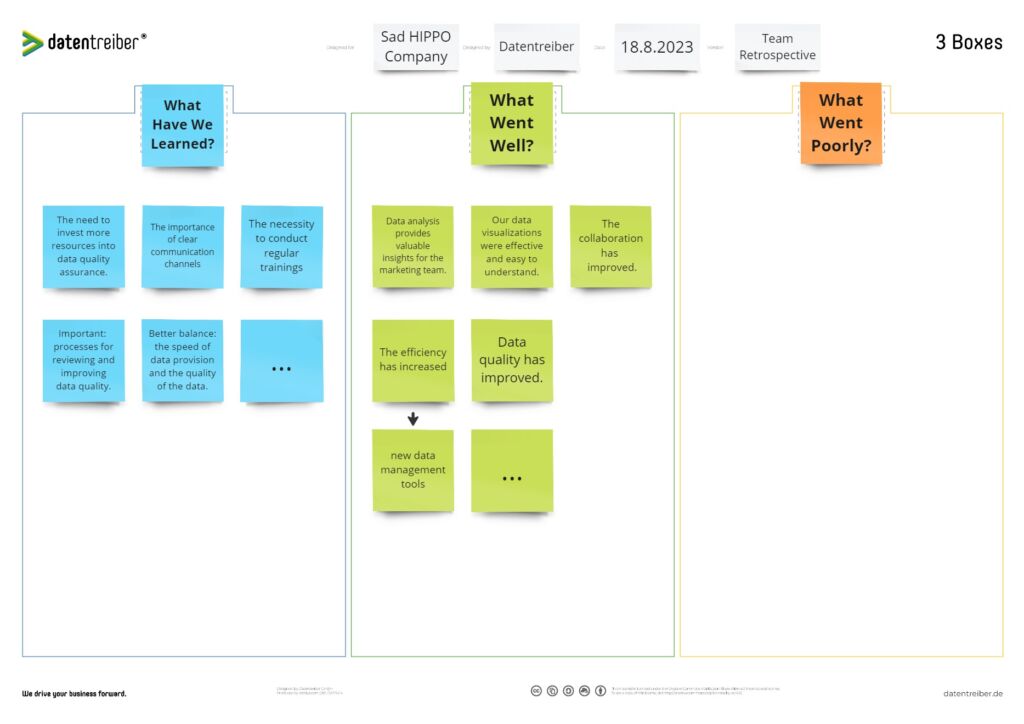
In the “What went poorly?” phase, the workshop leader encourages the team to openly discuss challenges and problems. He creates a trusting environment where members feel comfortable addressing critical issues.
Now the team is ready to delve deeper and address less successful aspects. While some team members might be eager to discuss critical topics, it can be a challenge for others. In this step, participants should be encouraged to immediately share their thoughts and remarks or note them on the sticky notes. This can be particularly revealing as it can bring hidden problem areas to light.
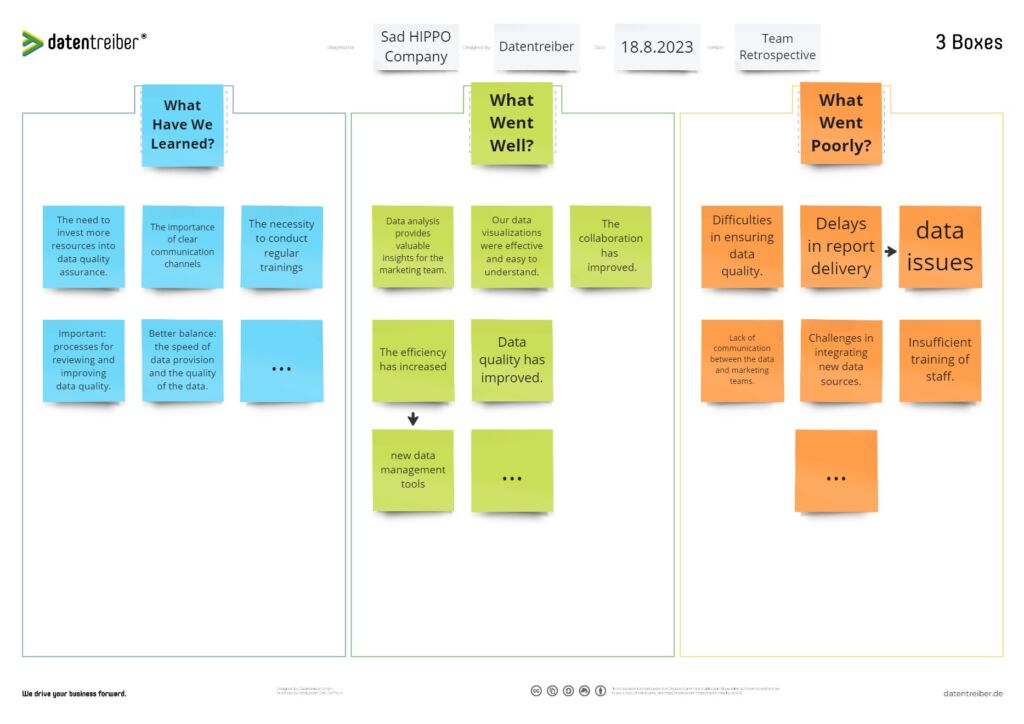
Identifying Relevant Issues
“Dot-Voting” follows the collection of thoughts on the Canvas. Team members distribute dots on the sticky notes to identify the most important topics. The sticky notes with the most dots are selected as relevant. This fosters participative decision-making and helps prioritize issues. This step prepares the subsequent “Cause-Effect Canvas” by focusing on delving into the root causes of the identified problems.
Working with the 3-Boxes Canvas is a crucial part of the process, for developing an effective data strategy. Through this method, teams can recognize their strengths, address weaknesses, and learn from their experiences. The entry into deeper strategic work is thus optimally prepared, laying a robust foundation.
In the next article of our series, we will dedicate ourselves to the Cause-Effect Canvas and show how participants can dive into the in-depth analysis of problems to develop effective solution strategies.
Deepen the Methodology and Grow with Datentreiber
To deepen your knowledge of the 3-Boxes Canvas and other methods, attend our seminars on “Data Strategy & Culture” for beginners and “Data Design Thinking” for advanced learners. These seminars impart extensive knowledge and practical skills for developing and implementing a comprehensive data strategy, focusing on all relevant stakeholders – ideally from different disciplines – to create a fully integrated data strategy that connects visions, goals, people, and users, as well as benefits and feasibility.
The “Data Design Thinking” seminar by Datentreiber delves into the practical application of analytical processes and the establishment of a data-driven company culture. Participants learn, among other things, to identify, evaluate, and prioritize analytical use cases, contextualize analytical maturity, and effectively utilize and manage the data landscape.
The “Data Strategy & Culture” seminar, on the other hand, focuses on shaping the digital and cultural transformation towards a data-driven business model. It provides insights into Big Data, Predictive Analytics, and AI, as well as developing relevant business metrics and avoiding common pitfalls in the analytics field.
The seminars are designed not only to convey theoretical knowledge but also to deepen the learning process through practical exercises and the development of individual data strategies. Participants learn to design data strategies that go beyond the isolated examination of individual canvases and leverage synergistic effects within a comprehensive data strategy.
